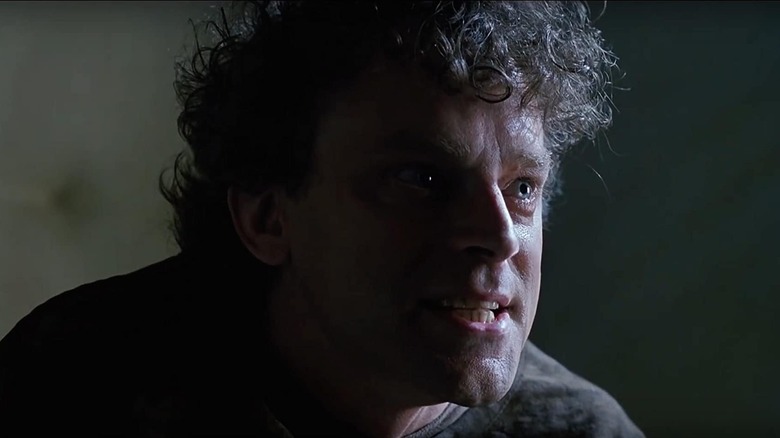
Horror film sequels often face the same challenges that comedy sequels do. Many premises are designed for a singular story, and conclude with a resolution that doesn't immediately promise a follow up. A pivotal moment in many horror films is characters facing their fears; it's harder to justify a continuation if the threat is already resolved. However, horror film franchises remain popular thanks to innovation. It's exciting when the original filmmaker can return to expand on their original vision, but a change of voice can diversify the depiction of what true "horror" actually looks like.
2021 was a big year for horror sequels. Michael Myers returned for "Halloween Kills," the Warrens' story concluded with "The Conjuring: The Devil Made Me Do It," Chris Rock reimagined Saw with "Spiral," and director Nia DaCosta reclaimed the legacy of "Candyman."
Capturing the entirety of the horror genre is no easy feat, and this list includes only one sequel per franchise. These are the greatest horror movie sequels ever made.
The Exorcist III
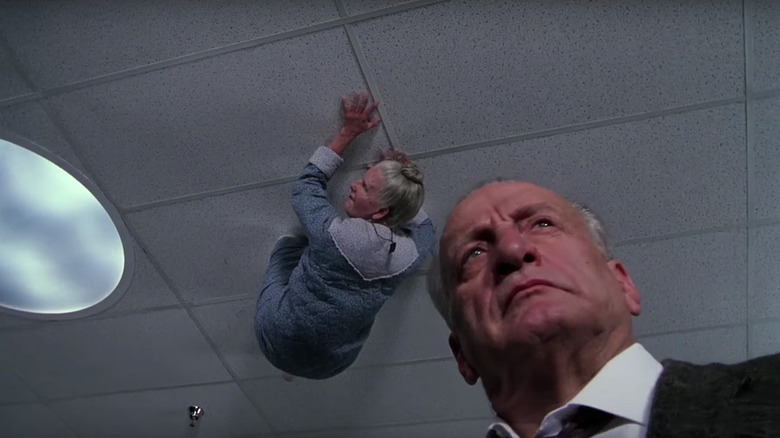
"The Exorcist" is a fascinating film franchise. William Friedkin's 1973 original was a landmark horror film that terrified audiences like no film in history, causing some viewers to become physically ill. The film brought respect to the horror genre when many film scholars had dismissed it, becoming the one of the genre's highest-grossing films and earning ten Academy Award nominations, including a Best Adapted Screenplay win for writer William Peter Blatty (who adapted the story from his own novel).
However, the immediate 1977 sequel "Exorcist II: The Heretic" from director John Boorman provoked the exact opposite responses. Boorman's film was immediately the butt of a joke, with Friedkin himself saying on "The Movies That Made Me" podcast that it was one of the worst movies he's ever seen. There was little demand for a third film, but in 1990 Blatty returned to his original source material for a third entry in the saga that surprisingly rivaled the original.
Blatty's film explores the residual impact that the death of Father Damien Karras (Jason Miller) in the original film had on the church community. Karras's companion Lieutenant William F. Kinderman (George C. Scott) is mourning his friend's passing, and as he prepares to retire he's called to investigate a mysterious set of murders linked to The Gemini Killer. The Gemini is revealed to be possessed by a demonic entity, and takes the form of the convict James Venamun (Brad Dourif). Scott and Dourifs' conversations are mesmerizing, and the crime angle makes it particularly frightening.
Evil Dead II
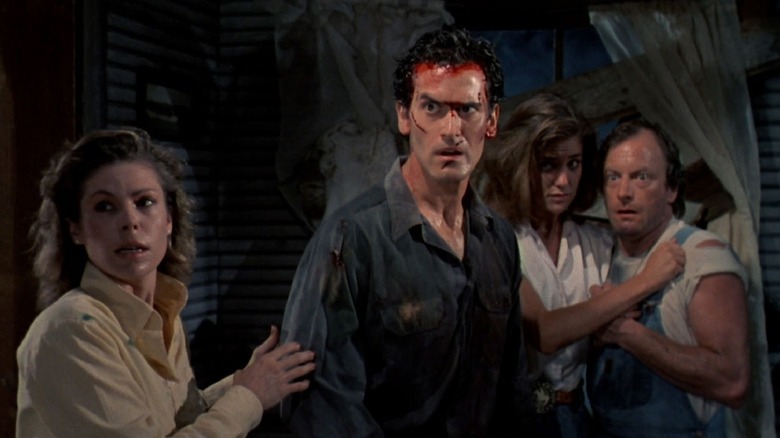
Sam Raimi's 1981 directorial debut "The Evil Dead" was game changing, proving that low budget horror filmmakers could reach a wide audience. Raimi's hand-crafted practical gore effects and quirky dark comic tone felt personal in a way studio horror films didn't. It made expectations high for Raimi's follow up, but 1987's "Evil Dead II" was even more audacious, bloody, and hilarious than the original.
The story of "Evil Dead II" is virtually identical to the first film, but dialed up to more cartoonish extremes. Raimi's childhood best friend Bruce Campbell returned to the role of Ash, who -- after defeating the demonic monsters summoned from the "Book of the Dead" -- returns to a mysterious log cabin in the middle of the woods. Ash and his girlfriend Linda (Denise Bixler) are looking for a romantic getaway, but demonic entities summoned from an archaeological dig threaten them once more. Ash straps on the chainsaw he used in the first film's conclusion and gleefully demolishes the new batch of "Necronomicon" creatures.
Ash's character became better defined; he has more humorous one-liners than he did in the first film, and his weariness having to deal with the same circumstances is amusing.
Aliens
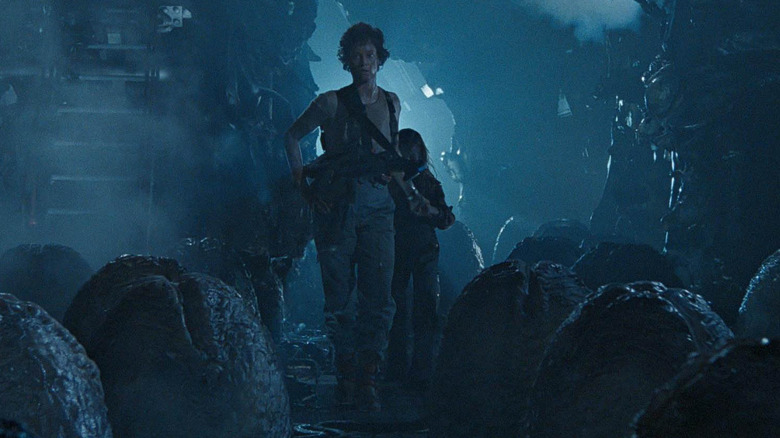
1979's "Alien" came at a pivotal moment in science-fiction film history. Director Ridley Scott diversified the genre with his concept of "Jaws" in space. A terrifying isolation thriller, "Alien" utilized groundbreaking visual effects to create the Xenomorph creature and the set for the spaceship Nostromo. The simple, primal fear of being hunted by an unknown entity haunts the crew of the "Nostromo," and "Alien" had some of the most shocking death sequences in film history.
Interestingly, the 1986 sequel "Aliens" took a wildly different approach to the story that still respected Scott's groundwork. Recovered from the sleeping tube she entered at the end of "Alien," Sigourney Weaver's Ellen Ripley is recruited by her employer Weyland-Yutani to join a squad of Colonial Marines and investigate the Xenomorph eggs. Ripley fears provoking another tragedy, and her suspicions are proved right when her team is picked off one by one. Alongside Corporal Dwayne Hicks (Michael Biehn), she discovers the young girl Newt (Carrie Henn) and takes on a maternal role.
Director James Cameron transformed the premise into a relentless action thriller, but retained the same aura of suspense that Scott did. The film transforms Ripley from a helpless survivor to an empowered action hero.
Wes Craven's New Nightmare
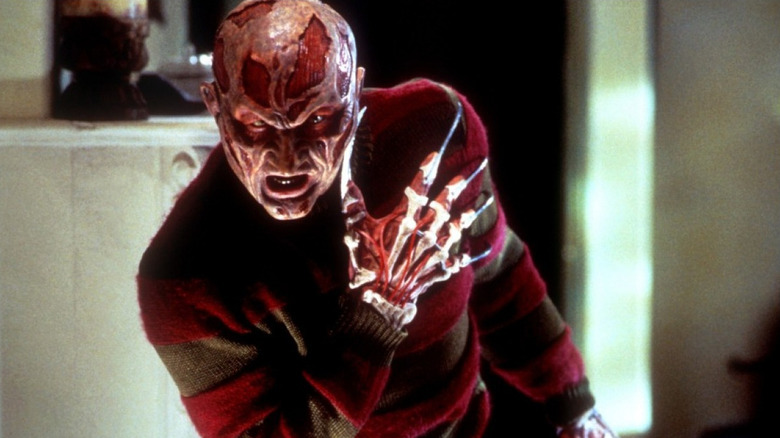
Over the course of the first six installments, the "A Nightmare on Elm Street" franchise dramatically changed its depiction of the main antagonist Freddy Krueger (Robert Englund). Director Wes Craven originally imagined the murderous slasher as an actual nightmare that haunted the dreams of his youthful victims, and sought vengeance on their parents for burning him alive. The 1984 original is one of the scariest movies ever made, but the tone grew sillier with each installment that lacked Craven's direct involvement.
Craven was displeased with how his original vision had been subverted, and in 1994 he returned to the series to help the highly underrated "Wes Craven's New Nightmare." Although billed as the seventh entry in the series, it takes place outside of the established continuity. The film centers on the actual lives of the first film's cast, with the original Nancy Thompson, Heather Langenkamp, playing herself. Langenkamp discovers that Freddy has broken out from behind the silver screen and haunts the dreams of her young son.
As he was now interacting with real people, Freddy became scary once more. Englund gives one of his strongest performances in the series, as he appears as both himself and a less campy, grittier version of the original character.
Scream 2
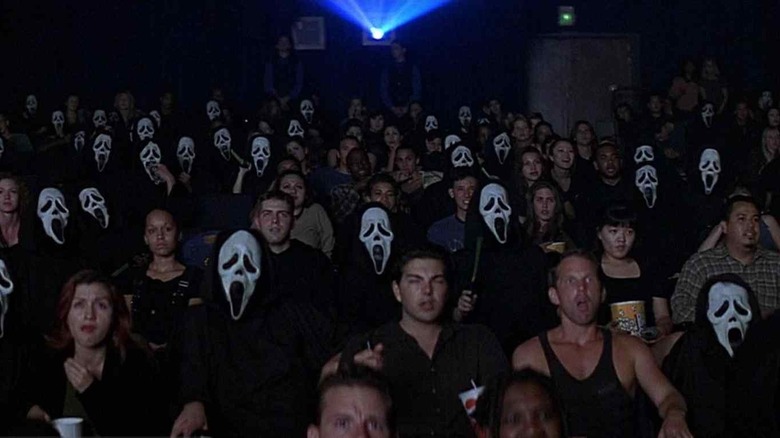
With "Scream" in 1996, Wes Craven took a satirical stab at slasher films thanks to the clever script from screenwriter Kevin Williamson. He explored how violent slasher films influenced young viewers, as the film's antagonists that don the "Ghostface" mask, cite popular horror films as helping them become "more creative." Protagonist Sidney Prescott (Neve Campbell) and her friends have already seen all the horror classics; the comic side character Randy Meeks (Jamie Kennedy) explains the meticulous "rules" that they must follow based on clichés in the genre.
Craven and Williamson faced an interesting dilemma with their sequel, as they had to match the original film's unique slant and justify continuing a story that had been wrapped up so neatly. "Scream 2" lived up to expectations with another compelling noir mystery -- but more importantly, it satirized the very nature of sequels. Craven openly addressed the common criticisms that recurring horror film franchises received, such as characters not learning their lessons and the premise feeling unoriginal. Campbell developed Sidney in an interesting way, as she's grown into her public persona. Sidney has a unique relationship with Cotton Weary (Liev Schreiber), who was wrongfully accused of her mother's murder.
The Texas Chainsaw Massacre 2
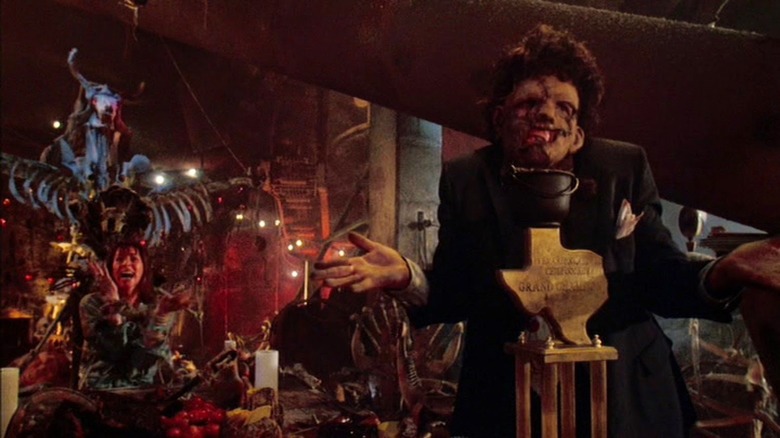
1974's "The Texas Chain Saw Massacre" became one of the most controversial films ever made, as the grim depiction of a cannibalistic serial killer was incredibly realistic. The film falsely claims to be based on a true story, and it was so disturbing for some viewers that it was banned in many countries. However, the antagonist Leatherface became an instant icon, and Marilyn Burn's hero Sally Hardesty was recognized as one of the most important "final girls" in horror film history.
Surprisingly, when he returned to the series twelve years later, writer/director Tobe Hooper took "The Texas Chainsaw Massacre 2" in a completely different direction. The sequel was a black comedy, and Hooper parodied recognizable sequences from the original. The first film had very banal dialogue, but the caricatures of Dallas culture in the second film are wildly over-the-top. Although the reveal of Leatherface was gradual in the original, he shows up in the first few moments of "The Texas Chainsaw Massacre 2" to violently dismember with a pair of rowdy teenagers.
Hooper developed Leatherface's metaphorical intent; the original depicted him as a childlike, confused blank slate, but in the sequel his sexuality is explored as he stalks the new final girl Stretch Brock (Caroline Williams).
Day Of The Dead
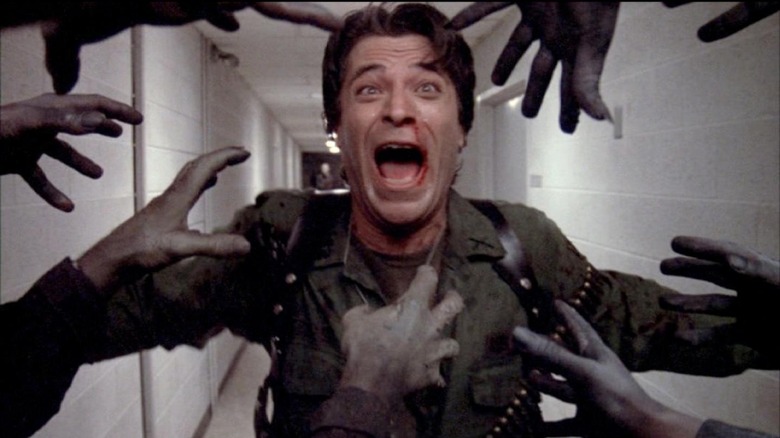
George Romero's "Living Dead" franchise created the cinematic zombie as it is known today, and Romero's hand crafted gore effects were completely groundbreaking. Each installment in Romero's initial trilogy introduced a new set of characters, a distinct tone, a different environment, and addressed the social and political climate of their respective era. 1968's "Night of the Living Dead" was a bare-bones, black and white nightmare that captured Cold War anxieties as the characters question who has been infected. 1978's "Dawn of the Dead" satirized American consumerism by pitting its band of survivors in a massive shopping mall.
1985's "Day of the Dead" explored Reagan-era militarism and the anti-science rhetoric that made society more dangerous. Many zombie films have grown more unnerving in the past year due to the COVID-19 parallels, but Romero's warning about not listening to experts in a time of crisis felt particularly unnerving amidst the Trump Presidency. The film's chief antagonist isn't a zombie, but rather the unhinged militia leader Captain Henry Rhodes (Jospeh Pilato). Rhodes is tasked with protecting scientists Dr. Sarah Bowman (Lori Cardille) and Dr. Matthew Logan (Richard Liberty), who research select zombies that have begun adopting humanistic traits. Rhodes interferes with the study and seeks a violent alternative, leading to a disastrous new conflict.
Gremlins 2: The New Batch
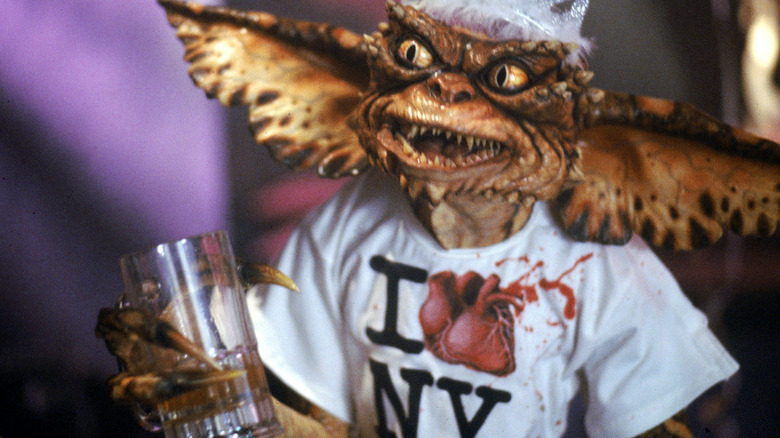
Joe Dante's original "Gremlins" found the perfect mix between horror, comedy, fantasy, and genuinely heartfelt moments. The relationship that Billy Peltzer (Zach Galligan) develops with his furry companion Gizmo is quite touching, as is his romantic interest in Kate Beringer (Phoebe Cates). Dante worked within a limited environment, as the Gremlin threat is entirely contained to Billy's home town of Kingston Falls.
However, Dante's 1990 sequel "Gremlins 2: The New Batch" focuses primarily on eccentric elements with a chaotic satire of corporate greed. As a result of illicit scientific studies by Dr. Catheter (Christopher Lee), the Gremlins are unleashed in New York City and take on quirky new forms. While the creatures themselves are less scary as a result, Dante's visuals are even more inventive. Peltzer has an interesting character arc, and the passage of time between the two films is acknowledged. Now trying to gain legitimacy as an investor, Petzler finds himself out of place in Wall Street.
Doctor Sleep
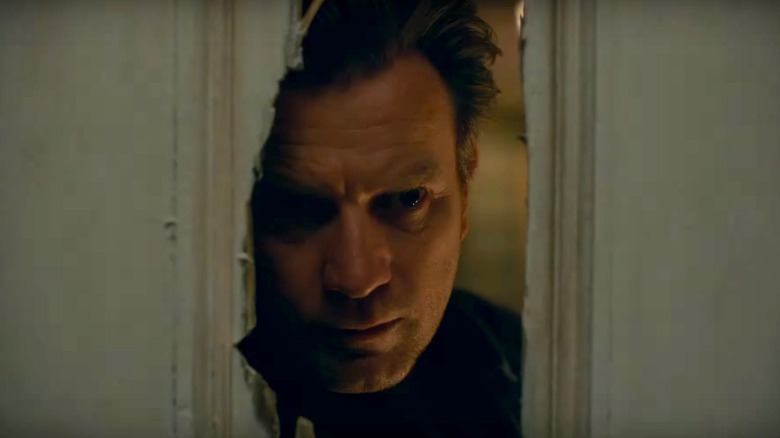
Stanley Kubrick's 1980 classic "The Shining" is one of the greatest horror films ever made, but the original author Stephen King was famously not a fan. King was displeased with Kubrick's depiction of Jack Torrance (Jack Nicholson) as a malicious figure from the very beginning, as his original novel crafted a more tragic story of a family falling apart and cast Jack in a more sympathetic light. Kubrick also ignored many of the mythological world building King had hinted at. This clash made the prospect of a sequel an inherently challenging one.
However, director Mike Flanagan managed to honor both artists with his brilliant adaptation of King's written sequel "Doctor Sleep." Instead of reiterating familiar moments from "The Shining" with a nostalgic edge, Kubrick explored the years of trauma that a grown Danny Torrance (Ewan McGregor) faced since his experience at the Overlook Hotel. Danny's struggles with alcoholism and neglect are treated respectfully, but the film is still terrifying with its rewarding return to the original site of the crime.
28 Weeks Later
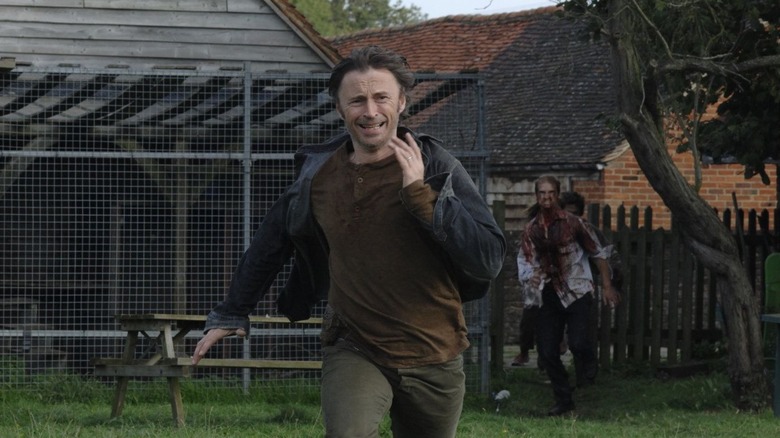
"28 Days Later" was a breakthrough zombie film, as the introduction of fast moving zombies was wildly distinct from the slow moving creatures that Romero introduced decades earlier. Director Danny Boyle and screenwriter Alex Garland developed an eerie post-apocalyptic London, where a compelling band of survivors led by Jim (Cillian Murphy) search for answers in the isolated city. The film solemnly concludes with the realization that the military has failed to contain the threat.
Stepping in for Boyle, director Juan Carlos Fresnadillo retained the character-driven approach with his 2007 sequel "28 Weeks Later." Like the first film, the audiences' knowledge of the situation is limited to the information that the protagonists are aware of, which makes the world building more exciting and original. There's a strong emotional hook from the very beginning; Don (Robert Carlyle) is forced to abandon his wife to the undead, and he struggles to reach out to his children Tammy (Imogen Poots) and Andy (Mackintosh Muggleton) when they're quarantined.
Psycho II
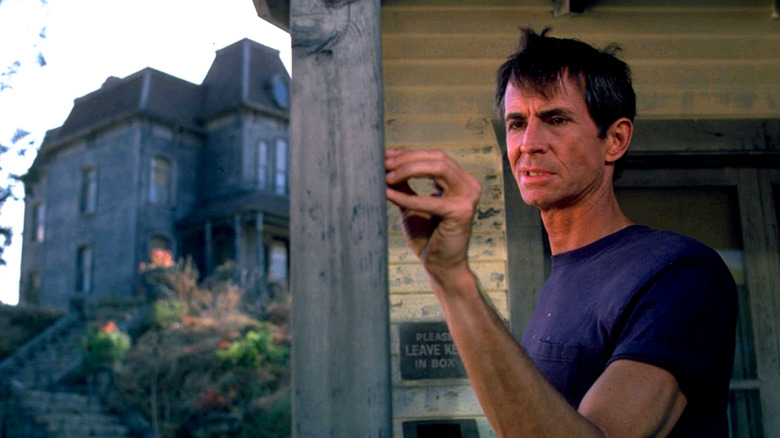
The prospect of a sequel to Alfred Hitchcock's 1960 classic "Psycho" seemed unthinkable. Hitchcock's film had essentially created the slasher genre itself with the character of Norman Bates (Anthony Perkins), and the reveal of his psychological condition was one of the most famous plot twists in film history. Hitchcock had passed away in 1980, but Perkins was still interested in exploring the Bates character.
Richard Franklin's 1983 sequel "Psycho II" is one of the most intriguing horror sequels of all-time; rather than emulating Hitchcock's approach, he takes the series in a more character-centric direction, as the lurking presence of his mother that haunts Norman's mind. Perkins turns the killer into the victim, and the signs of his mother's presence now have tragic undertones. "Psycho II" has a shocking twist that ties into the original through the character of Mary Samuels (Meg Tilly); the viewer must question whether Mary or Norman is the actual villain.
Friday The 13th: The Final Chapter
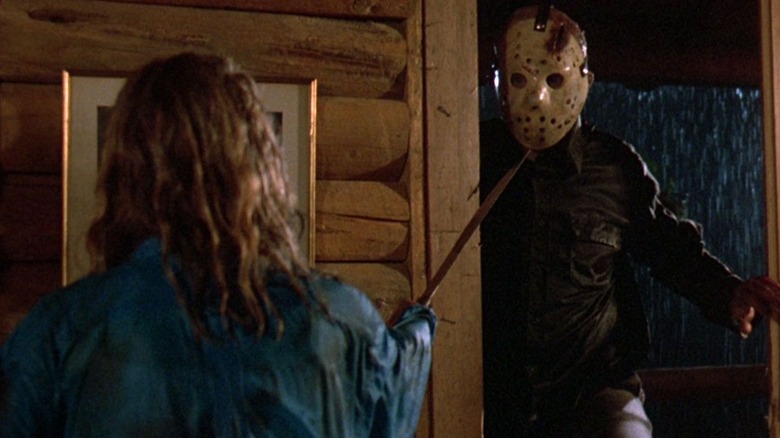
"Friday the 13th" is one of the longest running slasher franchises. There are twelve installments overall, including ten entries in the initial series, the crossover "Freddy vs. Jason," and the 2009 remake. The characterization of Jason Voorhees developed over time. Jason himself doesn't become the main killer until "Friday the 13th Part 2," and he didn't take on his iconic hockey mask until "Friday the 13th: Part III." However, 1984's "Friday the 13th: The Final Chapter" is the most consistently enjoyable installment, boasting some of the best death sequences and the most engaging set of characters.
The earlier films didn't spend much time developing the teen camp counselors beyond a few identifiable traits, but "The Final Chapter" has an interesting sibling relationship between Trish (Kimberly Beck) and Tommy Jarvis (Corey Feldman). Jason stalks Trish and her band of rowdy friends, including Crispin Glover's hilarious and awkward Jimmy (Crispin Glover). Tommy's final battle with Jason has actual emotional stakes. Having a younger character actively battle against the relentless killer was a new direction for the series.
Halloween (2018)
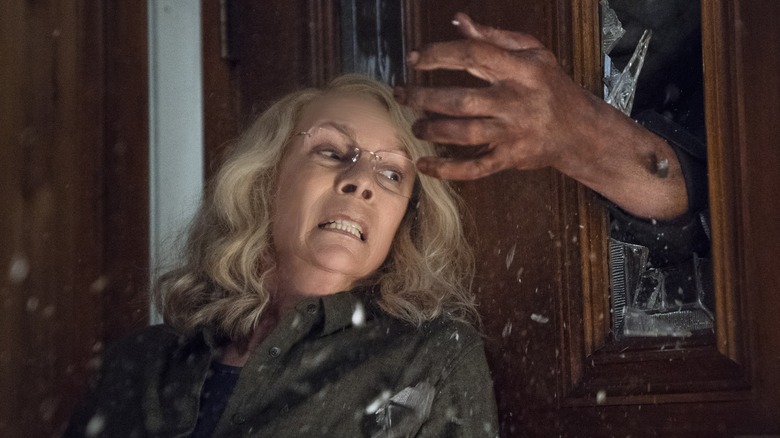
The "Halloween" franchise had become weighed down by confusing mythology in the years following John Carpenter's 1978 classic. Michael Myers was revealed to be Laurie Strode's (Jamie Lee Curtis) brother in 1981's "Halloween II," and the later sequels developed confusing alternate timelines that attempted to explore the masked killer's backstory even further. What none of these films realized was that "Halloween" excelled when it was simple. Myers was scary because he could destroy the safety of a comforting home, and the mystery surrounding his origin made him more compelling.
Thankfully, the 2018 sequel simply titled "Halloween" ignored all the previous sequels and grounded the story by focusing purely on the relationship between Myers and Laurie. Curtis gives a sensitive, compelling performance as Laurie, who is determined to hunt down her tormentor. Director David Gordon Green examines Laurie's guilt and trauma, and it's inspiring to see one of the original final girls become so empowered.
10 Cloverfield Lane
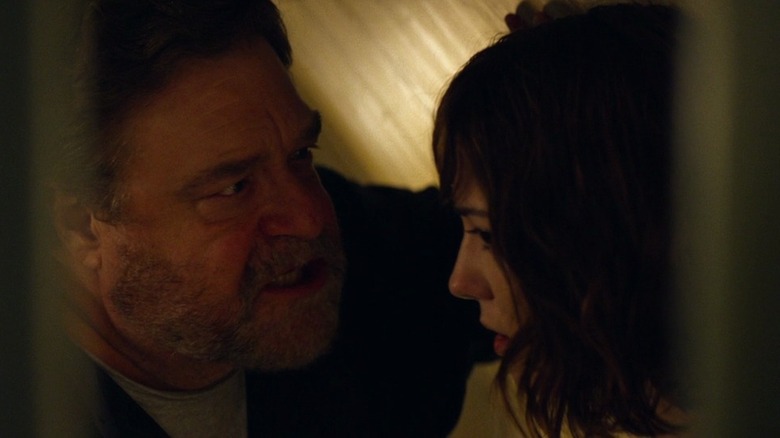
The "Cloverfield" franchise is fascinating because of its marketing and rollout. The original 2008 monster film was shrouded in mystery ahead of its release, and innovated within the found footage genre by gradually teasing the mysterious monster. "10 Cloverfield Lane" wasn't originally imagined as a sequel, and was reworked late within the production to tie in. This could have been disastrous, but "10 Cloverfield Lane" uses the established events to create an isolated contained thriller.
Michelle (Mary Elizabeth Winstead) is seemingly rescued by the mysterious stranger Howard Stambler (John Goodman), who informs her of the monster attack on New York City and offers her protection in his underground shelter. Michelle is introduced to another man Howard holds captive, Emmet (John Gallagher Jr.), and they grow uneasy as Howard's violent impulses are revealed. Howard is a terrifying villain in his own right, but the incorporation of the "Cloverfield" creatures in the film's conclusion take the story in unexpected directions.
A Quiet Place: Part II
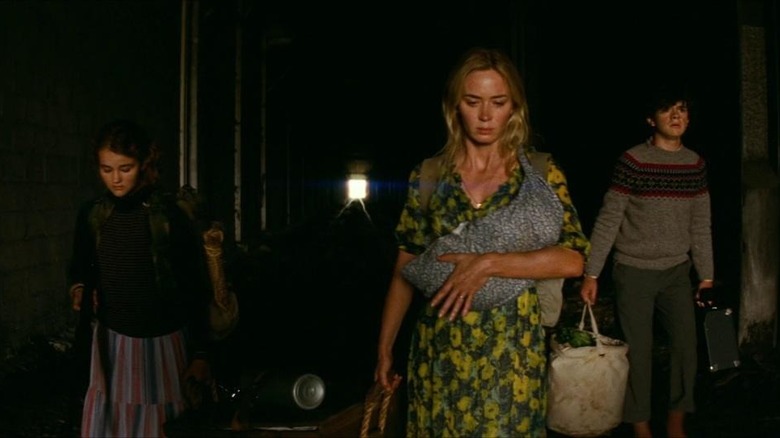
2018's "A Quiet Place" became an instant sensation with its original premise. Blind alien creatures with advanced sensitivity to sound forced the characters, and thankfully the audience, to be completely silent. That hook would have been enough to make the film engaging, but "A Quiet Place" had compelling characters to match its story. Lee (John Krasinski) and Evelyn (Emily Blunt) mourn the death of their young son, and their children Regan (Millicent Simmonds) and Marcus (Noah Jupe) question their parents' decision to have another child.
The gripping conclusion of the first film teased that the threat was far from over, and "A Quiet Place: Part II" picks up right where the original left off. It doesn't lose any of the suspense, and the Abbott family are in an even more vulnerable state following Lee's sacrifice. Although flashbacks explore the Abbotts' activities prior to the alien invasion, "A Quiet Place: Part II" retains the small-scale feel that makes the series unique.
Read this next: 14 Remakes That Are Better Than The Original
The post The 15 Best Horror Movie Sequels Ever Made appeared first on /Film.
from /Film https://ift.tt/3nygGiW
via IFTTT
Comments
Post a Comment